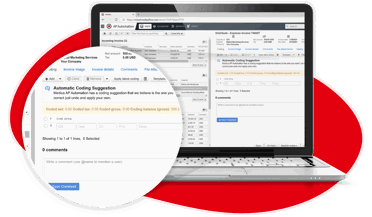Top challenges for AP teams managing cross-border payments
- Introduction
- Currency conversion and foreign exchange risk
- Regulatory compliance across jurisdictions
- Payment timing and settlement delays
- Vendor communication and data accuracy
- Technology gaps and lack of standardization
- How trade volatility impacts cross-border payments
- How Medius helps solve cross-border AP challenges
As businesses expand into global markets, accounts payable (AP) teams are finding themselves at the forefront of a significantly more complex financial landscape. Cross-border payments can unlock international growth, but they also present a host of operational and compliance challenges that are far more difficult to manage than domestic transactions. From navigating foreign exchange fluctuations to meeting jurisdictional compliance requirements, AP teams must evolve their strategies and adopt tools that are designed for modern, multinational finance operations. Without the right systems and processes in place, businesses risk financial losses, strained supplier relationships, and regulatory exposure.
Currency conversion and foreign exchange risk
One of the most persistent challenges for AP teams in global operations is managing currency conversion. With foreign exchange rates fluctuating daily—sometimes even hourly—finance professionals must monitor markets constantly to ensure that payment timing aligns with favorable exchange conditions. Misjudging these shifts can result in costly overpayments or underpayments, affecting both profitability and vendor relationships.
Beyond the financial impact, currency discrepancies can also create reconciliation headaches and delay financial reporting. Managing multiple currencies adds layers of complexity to budgeting, forecasting, and general ledger accuracy. Without automation or built-in exchange rate integration, AP teams are left manually entering and adjusting figures, increasing the likelihood of error and inefficiency.
Regulatory compliance across jurisdictions
Regulatory compliance becomes exponentially more complex when payments cross borders. Each country has its own tax structures, data privacy regulations, anti-money laundering laws, and reporting requirements. In regions like the European Union, businesses must adhere to frameworks like GDPR. In the United Kingdom, strict VAT (Value Added Tax) reporting rules require careful documentation and timely filing to remain compliant—especially for businesses handling high volumes of cross-border B2B transactions. Other jurisdictions may require Know Your Customer (KYC) or Anti-Money Laundering (AML) protocols, each with their own documentation standards and enforcement timelines.
Even a minor misstep in compliance—such as failing to collect the correct documentation or submitting reports in the wrong format—can trigger regulatory penalties, payment holds, or loss of trading privileges. This is particularly risky when AP teams manage payments across multiple jurisdictions simultaneously, each with its own unique standards and timelines.
CFOs and controllers are increasingly held responsible for ensuring compliance and financial transparency. As a result, AP teams need systems that support local regulations automatically, leaving less room for error and reducing the manual lift required to keep international payments compliant.
Payment timing and settlement delays
Cross-border transactions often suffer from slower processing times compared to domestic payments. Time zone differences, involvement of multiple correspondent banks, and varying settlement practices can result in delayed or inconsistent payment execution. Even with SWIFT and international wire systems in place, AP teams frequently encounter lags that complicate reconciliation and cash flow visibility.
These delays can affect supplier relationships, particularly when vendors are operating on thin margins or expect timely payment for essential goods and services. Missed due dates can lead to late payment penalties or lost early payment discounts, both of which affect the bottom line. In the worst cases, these delays can damage trust with suppliers, threatening long-term partnerships and disrupting supply chains.
For AP teams already managing a high volume of payments, these inefficiencies can quickly become unmanageable. Streamlining the timing and flow of payments is critical not just for operational performance but also for preserving vendor relationships and negotiating power.
Vendor communication and data accuracy
Working with international suppliers introduces challenges that go beyond transactional logistics. Time zone gaps, language barriers, and cultural differences can all impede communication between finance teams and vendors. Miscommunications or lack of clarity around payment terms, remittance instructions, or banking information can lead to failed payments or fraud risk.
Additionally, errors in vendor master data—such as incorrect bank account numbers, tax IDs, or mailing addresses—are more likely when working with international stakeholders. These errors can result in returned payments, processing delays, and costly rework. Ensuring accurate and updated vendor data is vital to maintain clean, compliant, and efficient AP processes.
Establishing regular communication protocols and using vendor self-service portals can improve collaboration and reduce friction, but many AP teams lack the systems to support these globally.
Technology gaps and lack of standardization
Legacy AP systems are often not equipped to handle the complexities of international payments. Without unified, cloud-based platforms, AP teams may juggle multiple systems across subsidiaries, regions, or entities—each with its own process variations and data silos.
This fragmented technology environment prevents finance leaders from gaining real-time visibility into cash flow, liabilities, and vendor performance across the organization. It also makes it difficult to standardize processes, enforce internal controls, or generate accurate global reports. Manual tasks such as invoice matching, approval routing, and payment scheduling drain resources and introduce risk.
As companies grow globally, the need for integrated, scalable AP automation solutions becomes increasingly clear. Tools that offer end-to-end visibility and automation across multiple geographies help businesses stay agile and compliant, even as complexity increases.
How trade volatility impacts cross-border payments
The landscape of global trade is shifting, and with it, the complexities of cross-border payments are intensifying. Tariffs and trade volatility have introduced a cascade of challenges that directly impact businesses' financial operations.
Direct tariff increases inflate transaction values, elevating costs for many businesses. Additionally, currency fluctuations create unpredictable costs, demanding sophisticated hedging strategies. To top that off, increased risks from global trade volatility translate to higher transaction fees from financial institutions.
Payment delays, driven by regulatory changes and increased scrutiny, strain or disrupt cash flow. This has a trickle-down effect on businesses’ supply chains, as supplier relationships can be jeopardized by payment uncertainties.
To combat these hurdles, organizations are looking into a few different strategies. Some businesses may look to diversify payment methods, exploring fintech and regional solutions. Others might look to source goods and supplies from geographies that come with lesser tariffs, thought the costs of goods sold will be a consideration. Additionally, supply chain regionalization will also result in altering payment flows.
In this environment of fluctuating tariffs and trade uncertainties, businesses must prioritize robust, adaptable payment solutions. By implementing automated spend management and AP solutions, businesses can gain the needed visibility and control to navigate the increasing complexity of cross-border payments.
How Medius helps solve cross-border AP challenges
Medius provides a modern, AI-powered AP automation platform built specifically for today’s global finance operations. Its intuitive design and intelligent features eliminate the manual tasks and risks that typically accompany cross-border transactions.
With Medius:
Exchange rate data is applied accurately during invoice matching and payment processing.
Real-time visibility into invoice status and cash flow improves planning and vendor communication.
Local regulatory compliance is supported through automated documentation and audit trails.
Multi-language and multi-currency capabilities support global operations without added complexity.
Medius also integrates with leading ERP platforms, providing a centralized and scalable solution for businesses with multinational footprints. This means that whether your teams are operating in New York, Berlin, or Singapore, your AP function runs on a unified system that adapts to local requirements while supporting enterprise-wide efficiency.
Cross-border payments don’t have to slow down your finance team—or your business. By adopting AP automation with Medius, companies can simplify their global workflows, strengthen compliance, and maintain full control over cash flow in every market.
Book a demo to see how Medius helps streamline international AP processes and reduce the risks of managing cross-border payments.







